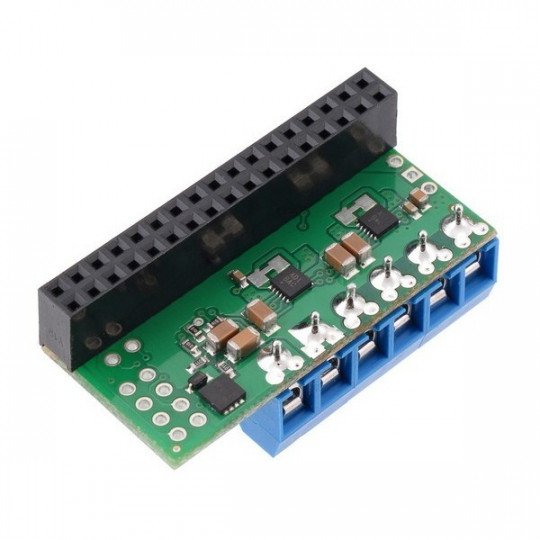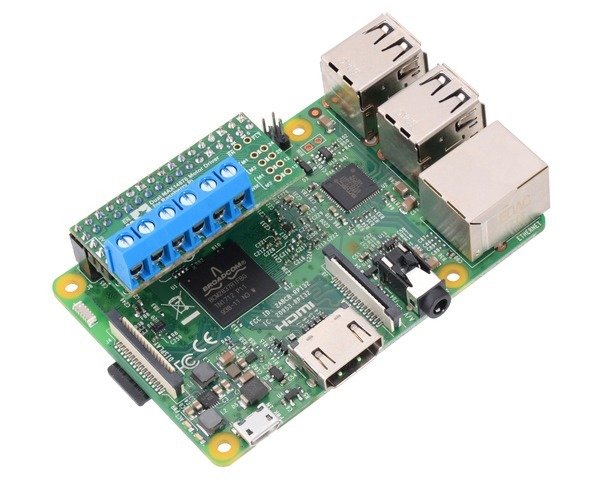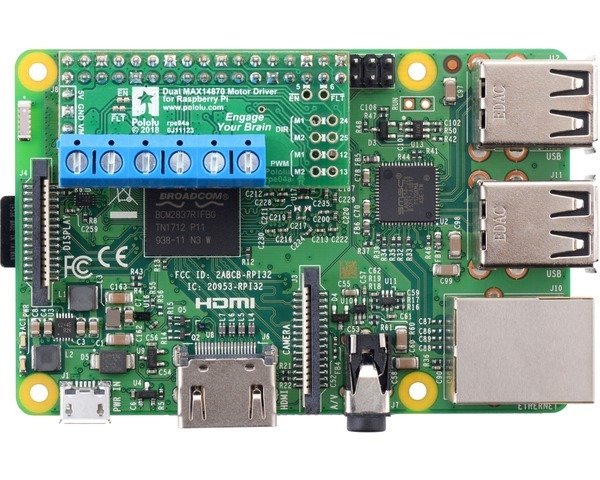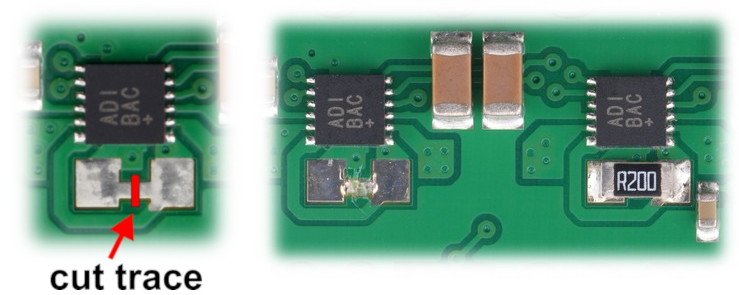Specification
- Supply voltage: 4.5 V to 36 V
- Continuous output current per channel: 1.7 A
- The maximum short-term current per channel: 2.5 A
- PWM frequency: up to 50 kHz
- Protection against incorrect attachment of power supply
- Designed for connectorsof the Raspberry Pi
- The possibility to power Raspberry using additional controller (not included)
- A Python library to facilitate module maintenance
- Dimensions: 43 x 16 mm
- Weight: 12 g
|
This version is assembled and ready to work. In our offer also available is KIT for self-assembly. |
Description
The module is based on two modules of MAX14870 and lets you control the motors with a supply voltage up to 36 V and a continuous current consumption of up to 1,7 A. The driver withstands seconds of jumping current up to 2,5 A. The speed of rotation can be controlled by the control signal of PWM.
In combination with the Raspberry Pi, using a specially prepared libraries, you can easily control the speed and direction of rotation of two DC motors. Form and pins of the board allow for direct connection to minicomputer, as shown in the pictures above. The system uses a 40-pin GPIO connector.
|
The product is compatible with Raspberry Pi B+ The manufacturer provides a library of Python for users of the Raspberry Pi. |
Modes of operation
The power of the motors was separated from the Raspberry Pi B+. The voltage from the range of 4,5 V to 28 V should be connected to VIN and GND pins. Power of the logic part 3.3 V is consumed from minicomputer.
Connection
The following table shows which pins of the Raspberry Pi are used by motor driver:
|
Pin RPi GPIO |
Pin of driver |
Description |
|---|---|---|
| 5 | EN |
By default, in the low state, it indicates the disabled outputs of the motors. To run the driver, you must specify the status of high. |
| 6 | FAULT |
The error output. By default, in the high state. It indicates excessive current or temperature. |
| 12 | Motor 1 PWM |
The PWM inputs to control the rotation speed of the motor. The maximum PWM frequency is 50 kHz. |
| 13 | Motor 2 PWM |
The PWM inputs to control the rotation speed of the motor. The maximum PWM frequency is 50 kHz. |
| 22 | Motor 1 DIR |
Pin to choose the direction of rotation. In the low state, the current flows from output A to B. In high state - from B to A. |
| 25 | Motor 2 DIR | Pin to choose the direction of rotation. In the low state, the current flows from output A to B. In high state - from B to A. |
Modes of operation
The table shows the operation modes depending on the inputs:
| EN | DIR | PWM | MxA | MxB | Operation mode |
|---|---|---|---|---|---|
| 0 | 0 | PWM | PWM (H/L) | L | Forward rotation at a certain speed PWM %. |
| 0 | 1 | PWM | L | PWM (H/L) | Back rotation at a certain speed PWM %. |
| 1 | x | 0 | L |
L |
Braking (outputs connected to ground). |
| 1 | x | x | Z | Z | Disabled outputs. |
Additional limit of current
System MAX14870 has SNS input that can be used as an automatic current limiter. By default, it is connected to GND for both systems. To enable the limit, you must first cut the track between the pins of the resistors 1206. Then, to these pins you should connect the appropriate resistor 1206.
Power of Raspberry Pi
The device provides power to the minicomputer from the input voltage of module (VIN). To stabilize the voltage required for the Raspberry Pi 5 V, you can solder the converter D24V10F5 in specially prepared holes 5 V (output voltage), GND (ground), VOUT (supply voltage of motor). 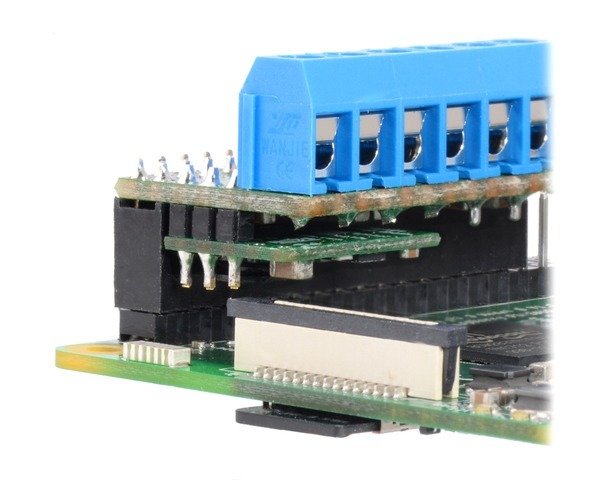
Useful links |
